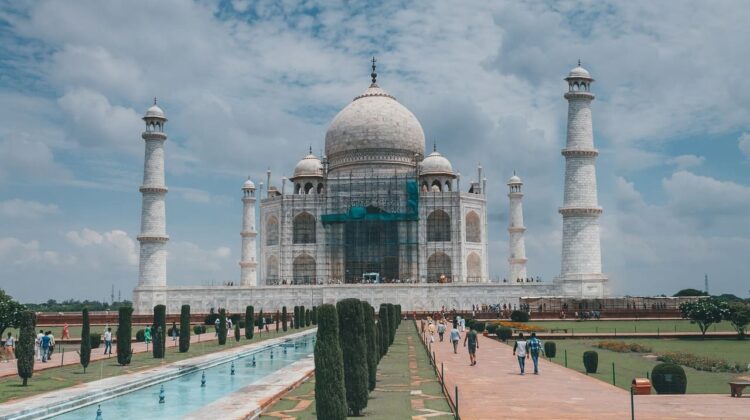
India’s Vivid Tapestry: A Beacon of Cultural Grandeur and Economic Ascendancy
India, a nation imbued with centuries of profound heritage and economic gravity, holds an unparalleled stature in the modern world. From its ancient civilisations to its present-day innovations, it has deftly maintained its singular identity while embracing waves of transformation. The confluence of India’s vast cultural wealth and its burgeoning economic prowess has firmly established it as a formidable force, both domestically and on the global stage.
A Land Embellished with Cultural Opulence
India’s cultural panorama is as expansive as it is intricate, stretching over an astounding 5,000-year history. It has been the cradle of some of the most illustrious civilisations, including the Indus Valley and the grand empires of the Mauryas, Guptas, and Mughals. These ancient dynasties and societies set the cornerstones for the country’s art, architecture, language, and philosophical musings, which continue to echo across time and space.
A key facet of Indian culture is its kaleidoscopic diversity. A melting pot of religions, traditions, and languages, India is often lauded as the birthplace of key spiritual doctrines like Hinduism, Buddhism, Sikhism, and Jainism. Festivals such as Diwali, Holi, Eid, and Durga Puja stand as vibrant testaments to this diversity, underscoring the nation’s unity amid multiplicity.
The country’s architectural legacy shines through in its iconic structures, most notably the ethereal Taj Mahal and the intricate carvings of Khajuraho. India’s classical dance forms, such as Bharatanatyam, Kathakali, and Kathak, alongside its rich musical traditions, reveal the country’s unyielding devotion to artistic mastery. Even in today’s India, ancient practices and modern influences coalesce to sustain and enrich this ever-evolving cultural mosaic.
The Meteoric Rise of an Economic Titan
Over the past few decades, India has emerged as an economic dynamo, swiftly climbing the ranks to become the world’s fifth-largest economy by nominal GDP. The economic reforms of the early 1990s catalysed an era of liberalisation that fostered industrial expansion and drew substantial foreign investment, propelling India toward modernisation.
Pivotal industries, such as information technology, pharmaceuticals, and automotive manufacturing, have emerged as key growth engines. Bengaluru, dubbed India’s “Silicon Valley,” has blossomed into a nexus of technological innovation and global IT services. Indian tech giants like Infosys, Tata Consultancy Services (TCS), and Wipro have positioned the nation as a leader in the global digital economy.
Equally influential, India’s pharmaceutical sector has dramatically reshaped global healthcare. As one of the largest producers of generic medicines, India’s contributions have provided affordable healthcare solutions to nations far and wide. Additionally, India’s robust manufacturing sector, particularly in steel, textiles, and automobiles, further underscores its economic muscle.
A Pivotal Player in Global Trade and Investments
India’s strategic positioning in global trade has been nothing short of transformative. With substantial exports of goods, services, and intellectual capital, the nation is a key player in international markets. Initiatives like ‘Make in India’ have bolstered domestic manufacturing capabilities while enticing foreign direct investments, making India a coveted destination for multinational companies.
Agriculture, a time-honoured pillar of India’s economy, remains pivotal. India is one of the world’s leading exporters of spices, tea, rice, and cotton. The Green Revolution of the 1960s marked a turning point, transforming India into a food-secure nation. Today, its agricultural output feeds millions domestically while sustaining exports to global markets.
India maintains robust trade partnerships with the United States, European Union, and China, among others. Moreover, its membership in BRICS—alongside Brazil, Russia, China, and South Africa—solidifies its stature as a key voice in global economic policy discussions.
Urbanisation and Infrastructure Renaissance
India’s rapid urbanisation has given rise to sprawling metropolises like Mumbai, Delhi, and Chennai, which now serve as economic powerhouses. The nation’s commitment to building world-class infrastructure has played a pivotal role in connecting these urban centres with rural areas, enhancing productivity and fostering economic mobility.
The government’s Smart Cities Mission aims to uplift urban living standards by integrating cutting-edge technology and sustainability into city planning. These urban innovations are poised to improve the quality of life for millions, while also mitigating environmental impacts.
The Middle Class Boom: A Surge in Consumerism
The emergence of India’s burgeoning middle class has ignited an insatiable demand for goods and services. This consumer revolution, one of the world’s largest, has created a fertile ground for industries to thrive. The explosion of e-commerce, led by companies like Flipkart and Amazon India, is just one example of how digital platforms are revolutionising the marketplace. Moreover, the widespread adoption of mobile payment solutions, such as the Unified Payments Interface (UPI), has positioned India as a global leader in fintech.
The newfound wealth among India’s middle class has sparked growth in key sectors like real estate, automotive, and consumer electronics, injecting further momentum into the country’s economic trajectory.
India’s Expanding Political Footprint and Soft Power
Beyond its economic triumphs, India wields substantial influence on the global political stage. As the world’s largest democracy, India remains a staunch proponent of multilateralism and is an active participant in peacekeeping efforts worldwide. Its roles in organisations such as the United Nations, the World Trade Organization (WTO), and the International Monetary Fund (IMF) ensure that India’s voice is heard in shaping global governance.
India’s soft power is also gaining traction, particularly through cultural exports like Bollywood cinema, yoga, and cuisine. Indian films are now celebrated worldwide, and the global embrace of yoga, symbolised by International Yoga Day, highlights India’s enduring influence on global culture.
Conclusion
India stands at the crossroads of tradition and innovation, a nation enriched by its cultural legacy and empowered by its economic dynamism. As it continues to evolve and grow, India’s influence on the global landscape—politically, culturally, and economically—will only deepen. From the pages of history to the frontiers of the future, India remains an indomitable force, poised to shape the world in the years to come.
Author: Donglu Shih
Expert in Asian culture and economics. She collaborates with major companies in the field of international relations. Collaborates with The Deeping on Asian political topics

